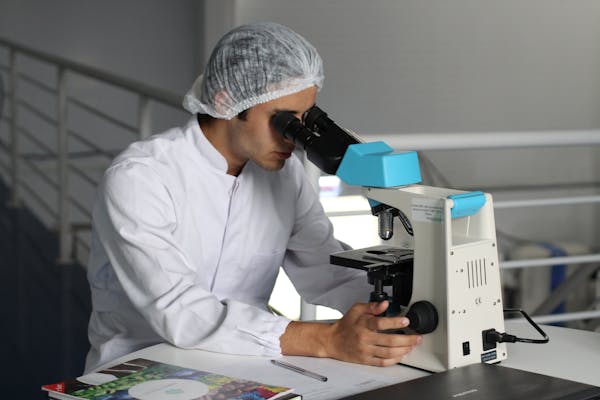Decoding the Toxins Within
How Genomics is Revolutionizing Safety Science
Article Navigation

Introduction: The Toxicological Time Bomb
Every day, humans encounter approximately 80,000 synthetic chemicals—in food, cosmetics, cleaning products, and medicines. Yet fewer than 10% have comprehensive safety data. Traditional toxicology relies on observing physical symptoms in exposed animals, a slow, costly process ill-equipped for modern chemical volumes. Enter the National Center for Toxicogenomics (NCT), established to fuse cutting-edge genomics with mechanistic toxicology. By mapping how toxins hijack our molecular machinery, scientists are not just diagnosing poisonings but predicting them—transforming chemical safety from reactive guesswork to proactive science 1 2 .
The Genomic Lens: Seeing Toxicity at Molecular Resolution
What is Mechanistic Toxicology?
Mechanistic toxicology seeks to understand how chemicals disrupt biological processes. Unlike traditional methods that document organ damage or death, it investigates the molecular chain reaction:
- Initial insult (e.g., DNA binding, receptor activation)
- Cellular dysfunction (e.g., oxidative stress, protein misfolding)
- Tissue injury (e.g., liver necrosis, immune suppression) 5 .
Example: When mice inhale carbon nanotubes, transcriptomics reveals spikes in IL-1β and TNF-α genes—early warnings of inflammation preceding physical lung damage 7 .
The Dose-Makes-the-Mechanism Principle
A pivotal insight from toxicogenomics: low and high doses of the same chemical can act through entirely different pathways. For instance:
- High-dose acetaminophen saturates detox pathways, causing liver necrosis via oxidative stress.
- Low doses alter circadian regulators, potentially disrupting metabolism long-term 5 .
Spotlight: The Yeast Revolution - A Toxicogenomics Case Study
The Experiment: Barcoding Survival in a Chemical Warzone
To pinpoint genes essential for surviving toxin exposure, researchers used Saccharomyces cerevisiae (baker's yeast)—a eukaryotic model with 70% human gene homology. The methodology combined high-throughput biology with clever barcoding 6 :
Step 1: Pooled knockout strains
~6,000 yeast strains, each lacking one gene and tagged with unique DNA barcodes, were mixed.
Step 2: Chemical assault
The pool was exposed to cisplatin (a toxic chemotherapy drug).
Step 3: Survival census
After 48 hours, surviving strains were counted via barcode amplification and microarray hybridization.
Step 4: Fitness scoring
Gene essentiality was calculated as: Fitness = logâ‚‚(Treated strain abundance / Untreated abundance) 6 .
| Gene Knockout | Fitness Score | Biological Role | Inference |
|---|---|---|---|
| RAD52 | -4.2 | DNA repair | Critical for fixing cisplatin-induced DNA breaks |
| CTR1 | +3.1 | Copper transporter | Loss improves survival; imports cisplatin |
| GSH1 | -3.8 | Glutathione synthesis | Depletes antioxidants, increasing toxicity |
Analysis: Negative scores denote hypersensitivity (e.g., RAD52 mutants died rapidly, exposing DNA repair as cisplatin's kill switch). CTR1's positive score revealed a detox strategy: blocking cisplatin uptake 6 .
The Toxicologist's Toolkit: Essential Research Reagents
| Technology | Key Reagents | Function |
|---|---|---|
| DNA microarrays | Fluorescent cDNA probes | Simultaneously profiles 20,000+ genes |
| CRISPR libraries | Barcoded yeast/mammalian knockout strains | Identifies toxin-sensitive genes genome-wide |
| Laser microdissection | Tissue sections + IR-capture films | Isolates specific cells (e.g., hepatocytes) for analysis |
| Mass spectrometry | Isobaric tags (TMT/iTRAQ) | Quantifies 1,000s of proteins/metabolites |
| Bioinformatics | ToxCast/Tox21 databases | Predicts toxicity via AI-driven pattern matching |
Example: Laser microdissection lets toxicologists analyze only chemical-damaged kidney tubules—avoiding "noise" from healthy tissue .
From Data Deluge to Decisions: Toxicogenomics in Action
The Rise of Virtual Toxicology
Integrating omics data birthed systems toxicology models like:
| Database | Omics Data | Applications |
|---|---|---|
| CEBS | Gene expression + histopathology | Links benzene exposure to leukemia pathways |
| TG-GATEs | Rat/human in vitro + in vivo | Predicts kidney toxins with 89% accuracy |
| ArrayTrack | Clinical biomarkers | FDA uses to evaluate drug safety submissions |
Challenges Ahead: The Road to Replacement
Future Prospects
Yet the NCT's vision is clear: A future where a week's cell-based testing replaces two-year rodent studies. Early wins include:
"Using toxicogenomics, we retired a drug candidate that caused phospholipidosis in cells—saving $2M and 1,200 animals."
Conclusion: Toxicity Decoded, Health Preserved
Toxicogenomics represents more than new tools—it's a paradigm shift from observing to understanding. By exposing toxins' first molecular whispers, we can block their path to harm. As databases grow and AI sharpens, the dream of instantaneous safety screening for any chemical edges closer. What remains unchanged is toxicology's north star: "The dose makes the poison." Now, we detect that poison at doses once invisible 5 .

